Hisserdude
Arachnoking
- Joined
- Apr 18, 2015
- Messages
- 2,456
Thought I'd make a thread to show off some of my bioluminescent click beetles, all in the subfamily Pyrophorini. So far I have three of the five US native species (all three collected by @Lucanus95 ), and of course the giant Pyrophorus noctilucus (which are now fairly well established in the US hobby).
First off I'll show off my most recent additions, Ignelater havaniensis, the largest US native Pyrophorini species, large adults can get a little over an inch long. I received adults about a month ago and now have probably 100 larvae, at least! So far they seem just as easy to breed as other members of this subfamily, and I hope to help establish and circulate them in the US hobby! This species, unlike any of the other cultured Pyrophorini, displays noticeable sexual dimorphism as adults, with males being more slender in build with longer antennae, whereas the females have slightly shorter antennae and are broader in shape. Also unlike any of the other US natives, I.havaniensis have pointed extensions to the tips of their elytra, which makes them easy to tell apart from the smaller Deilelater species which might have overlapping ranges with them.
So far they seem just as easy to breed as other members of this subfamily, and I hope to help establish and circulate them in the US hobby! This species, unlike any of the other cultured Pyrophorini, displays noticeable sexual dimorphism as adults, with males being more slender in build with longer antennae, whereas the females have slightly shorter antennae and are broader in shape. Also unlike any of the other US natives, I.havaniensis have pointed extensions to the tips of their elytra, which makes them easy to tell apart from the smaller Deilelater species which might have overlapping ranges with them.
Here's an adult male:
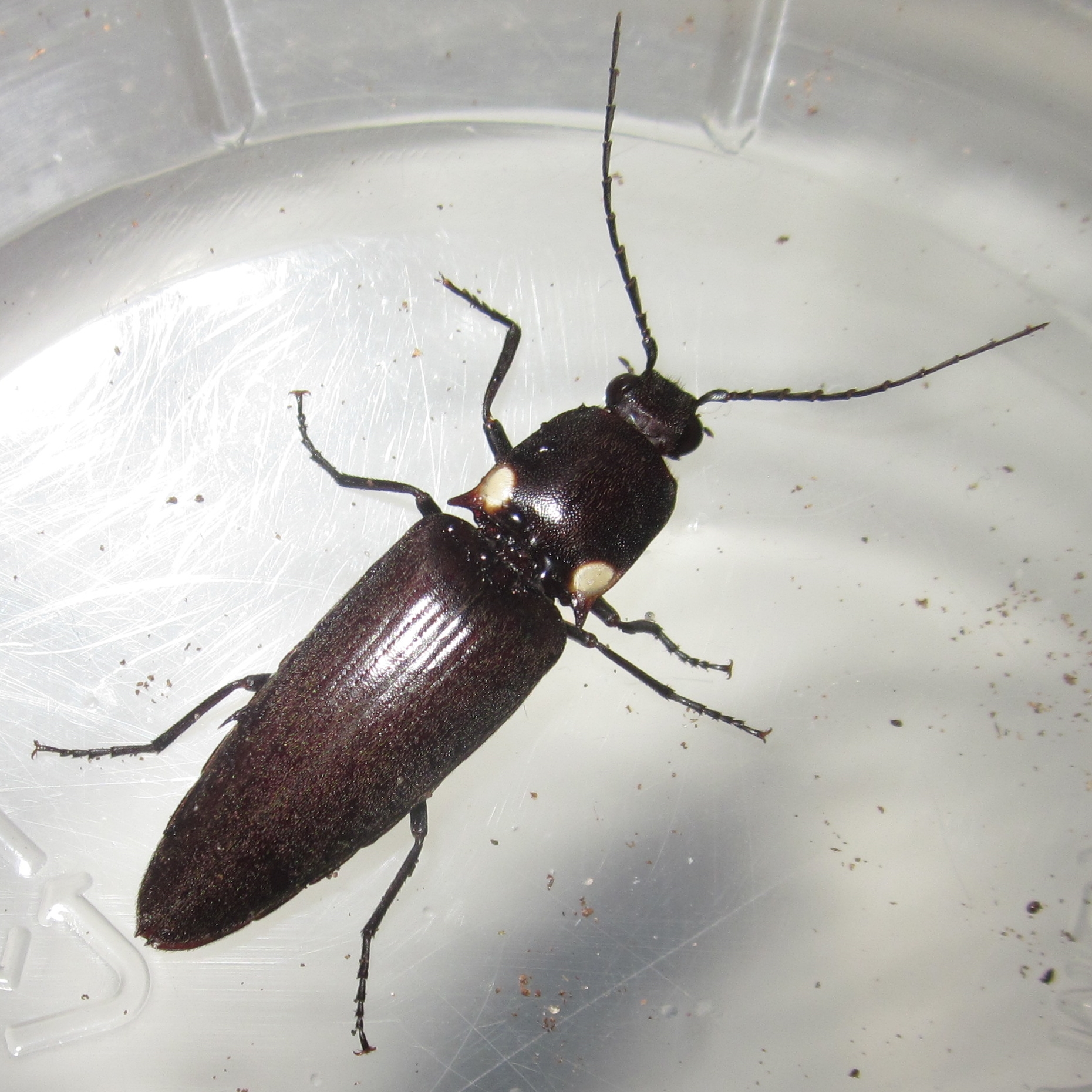
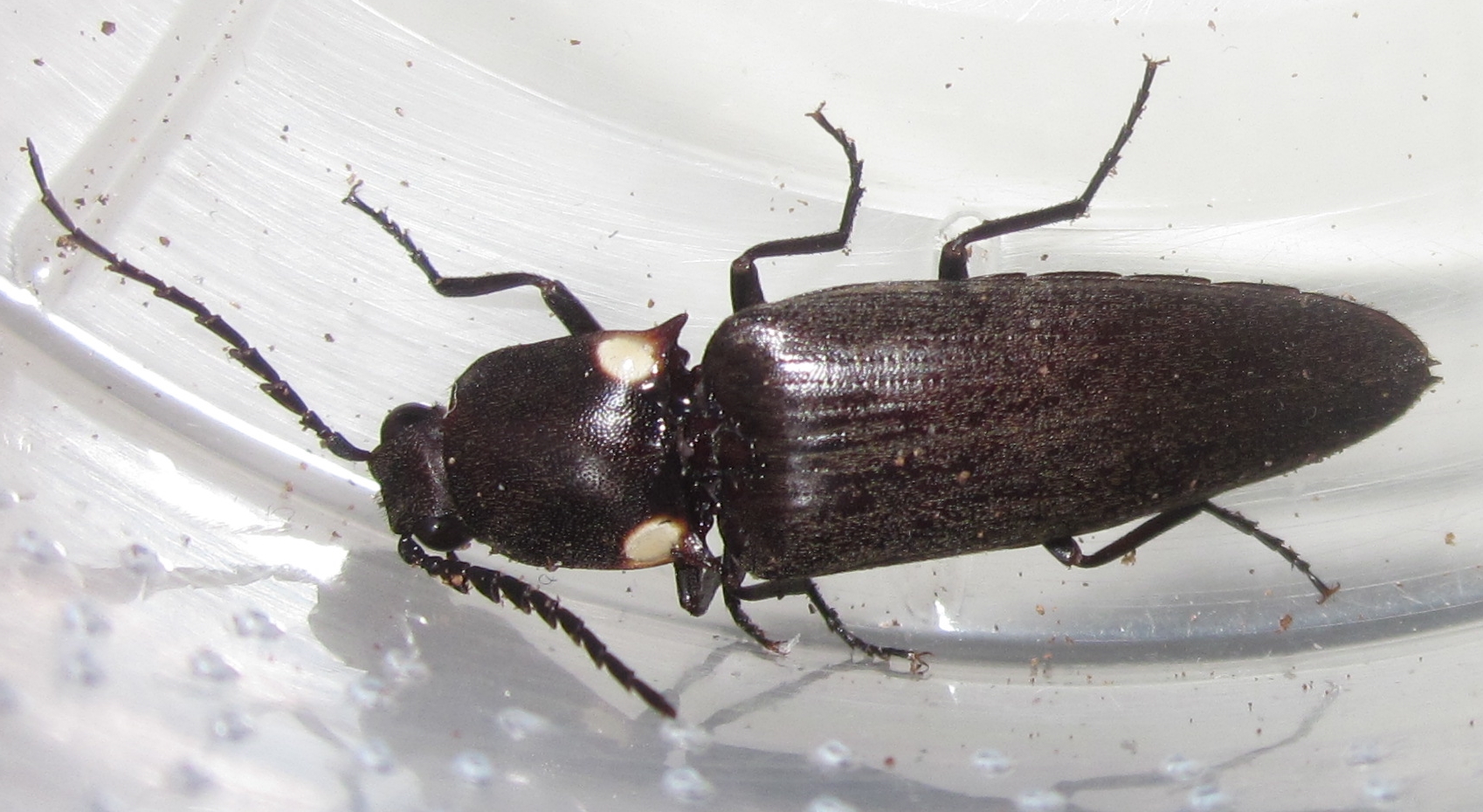
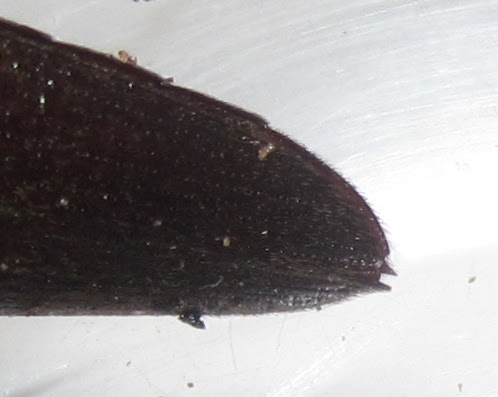
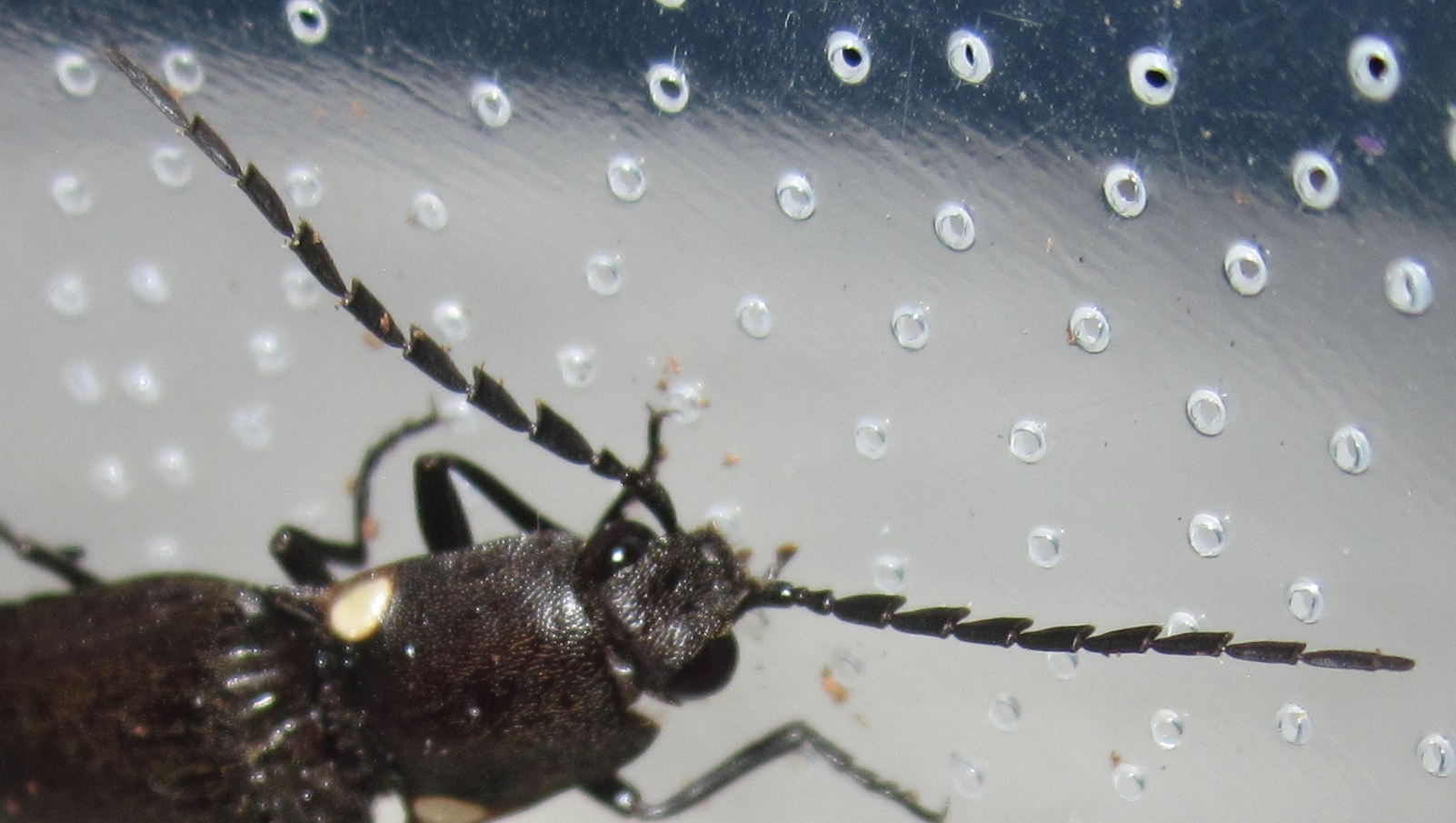
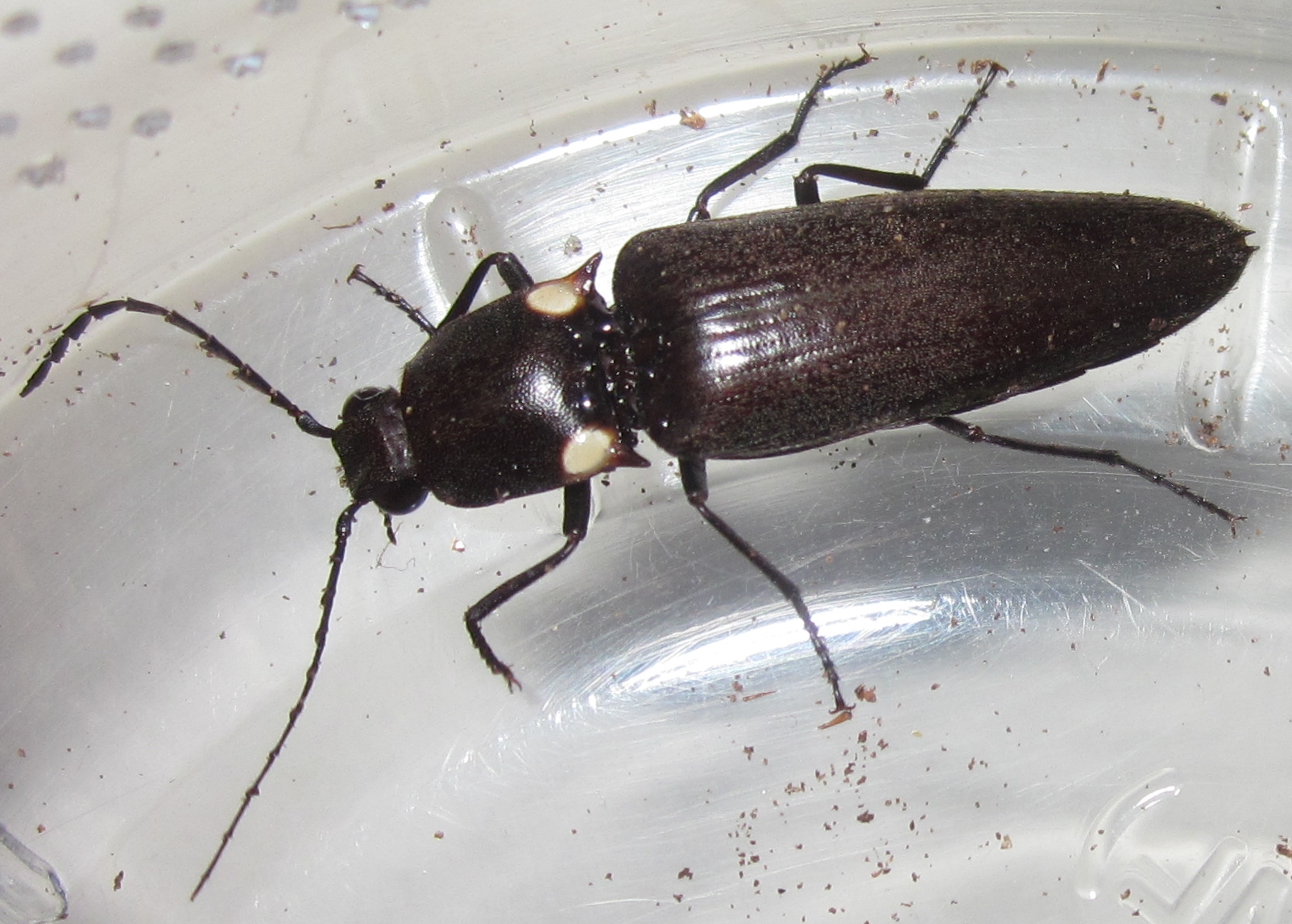
And now an adult female:
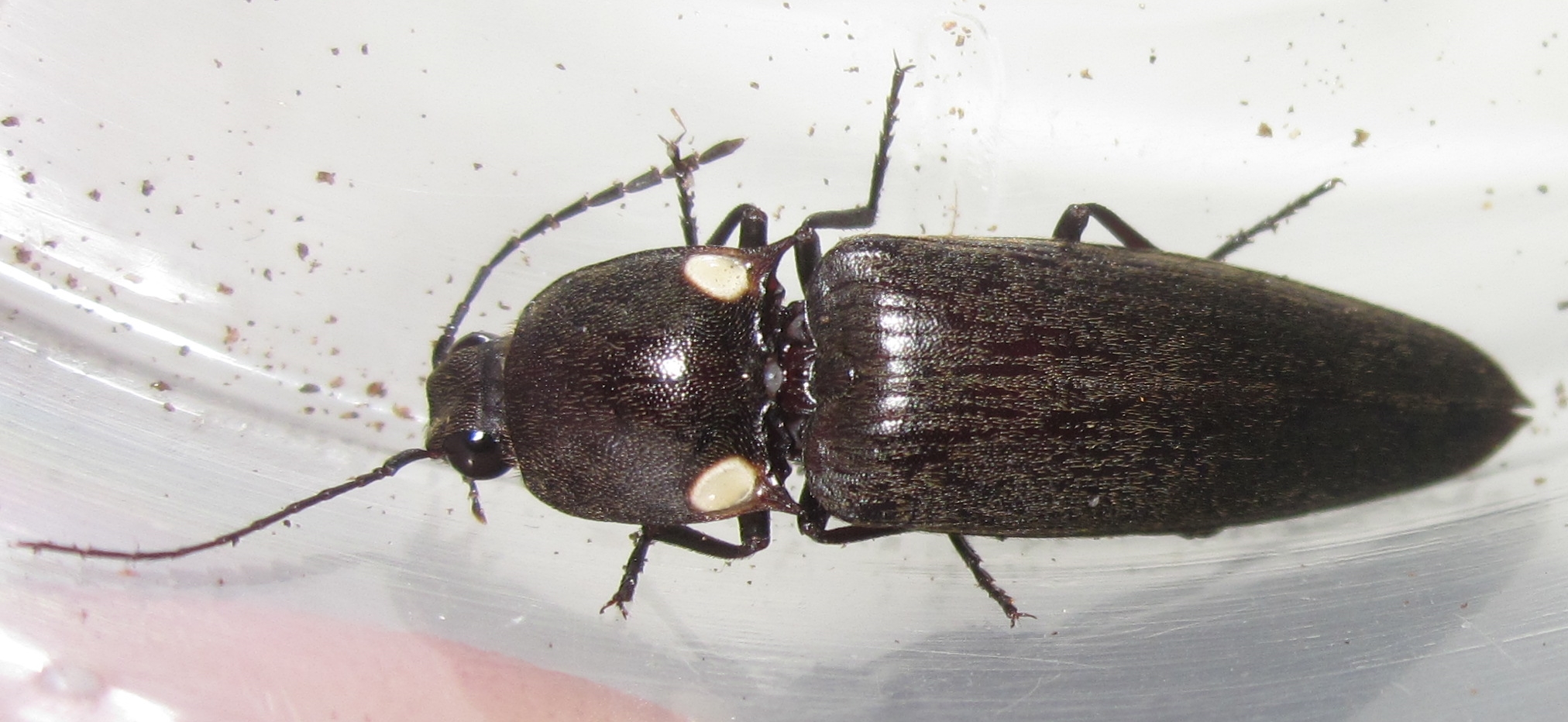

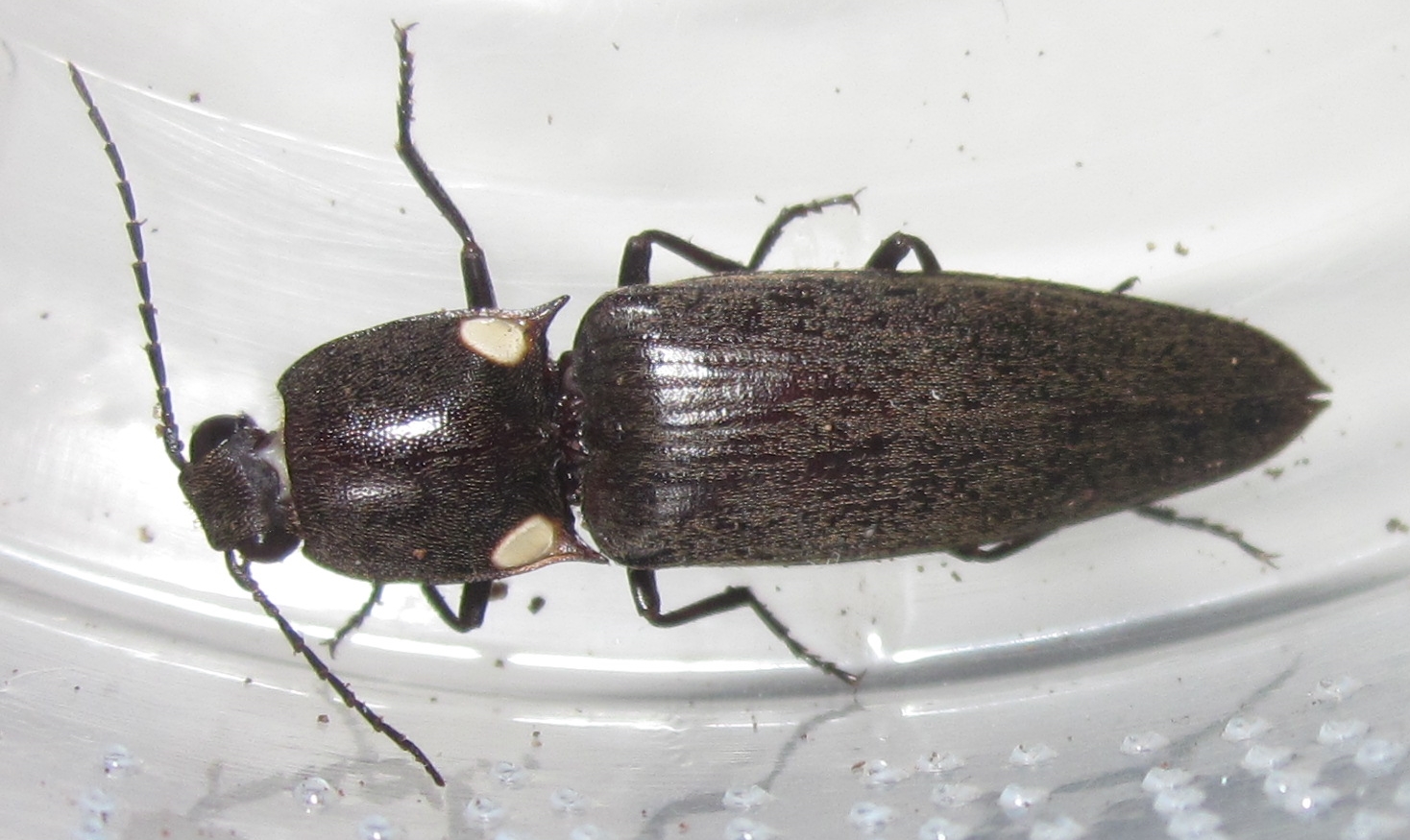
And here is an adult male doing his thing, glowing quite brightly from his two pronotum spots!
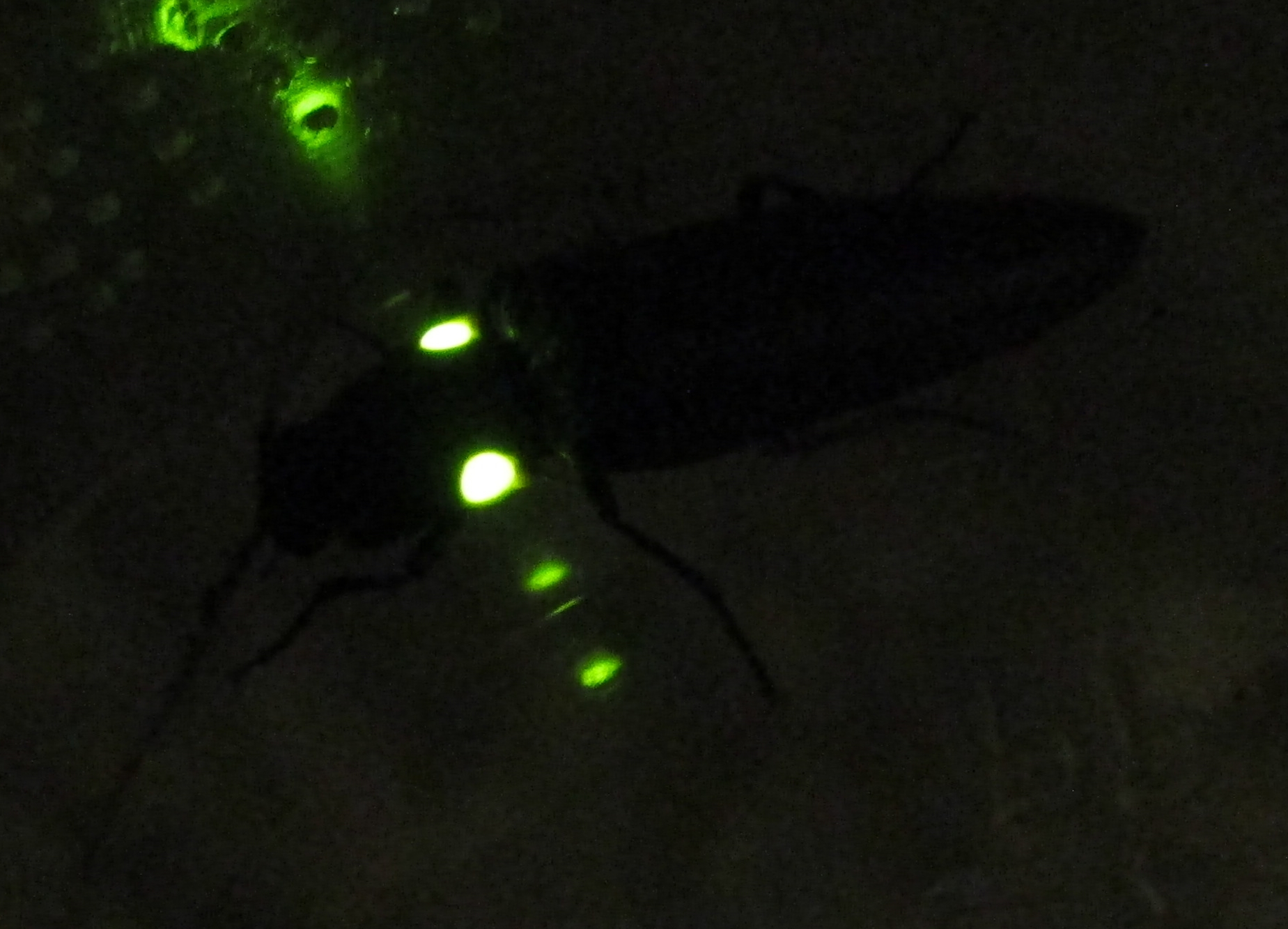
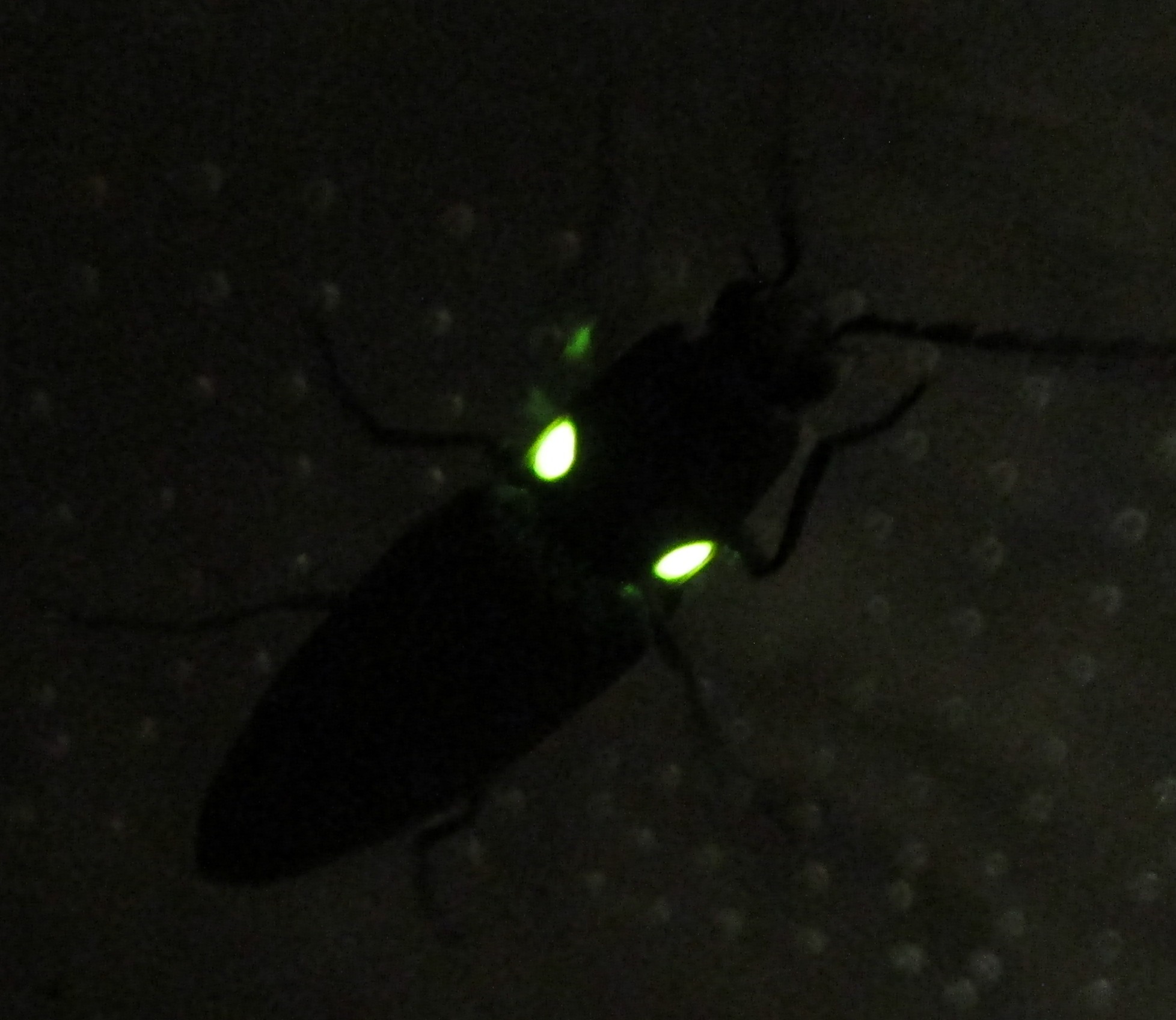
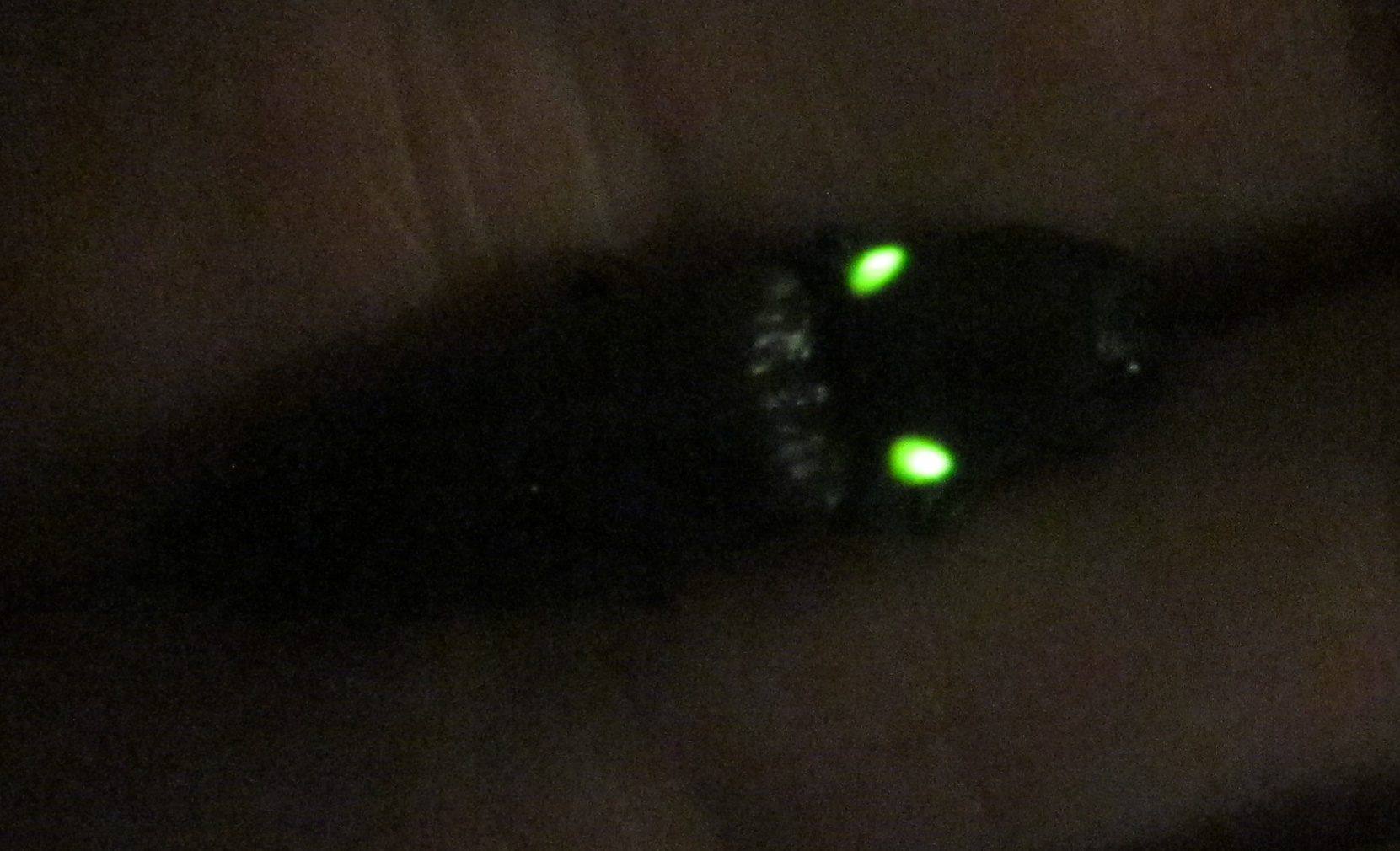
Here's a tiny L1 larva, click beetles go through many molts, and not even a set number of molts, not like scarabs that only have three instars:
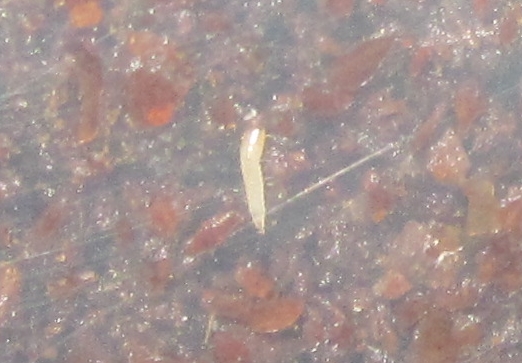
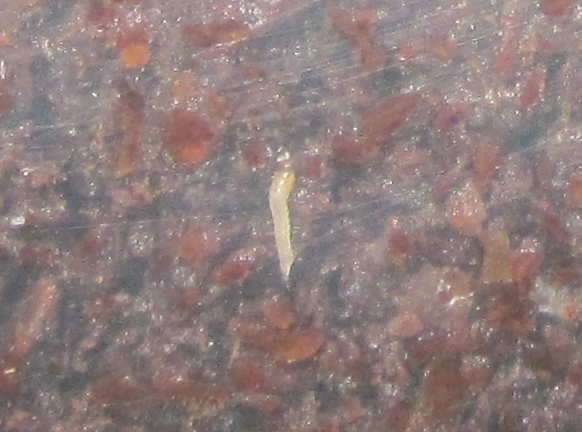
And lastly, here is a size comparison between my largest Pyrophorus noctilucus adult (left) and my largest Ignelater havaniensis adult (right):
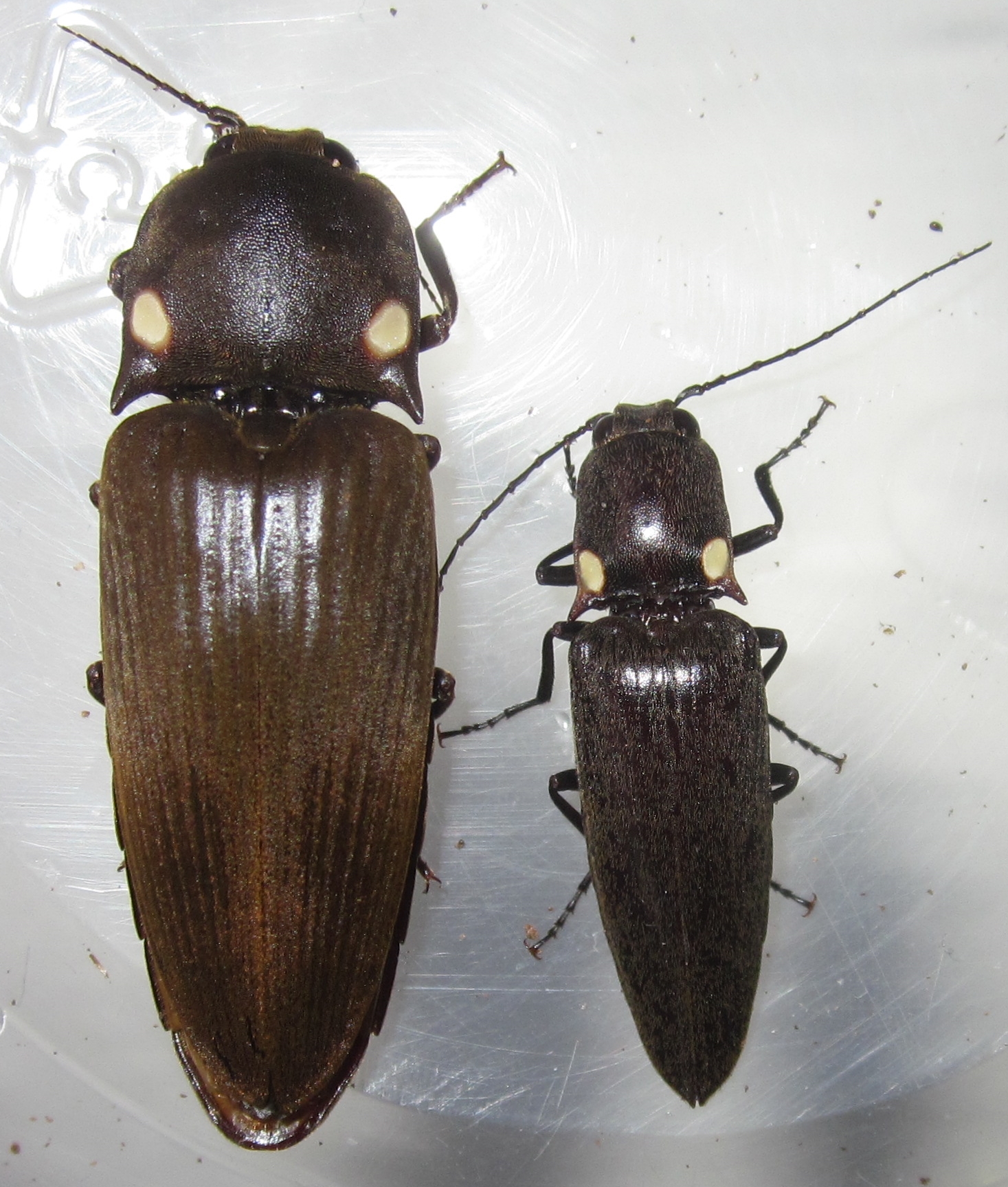
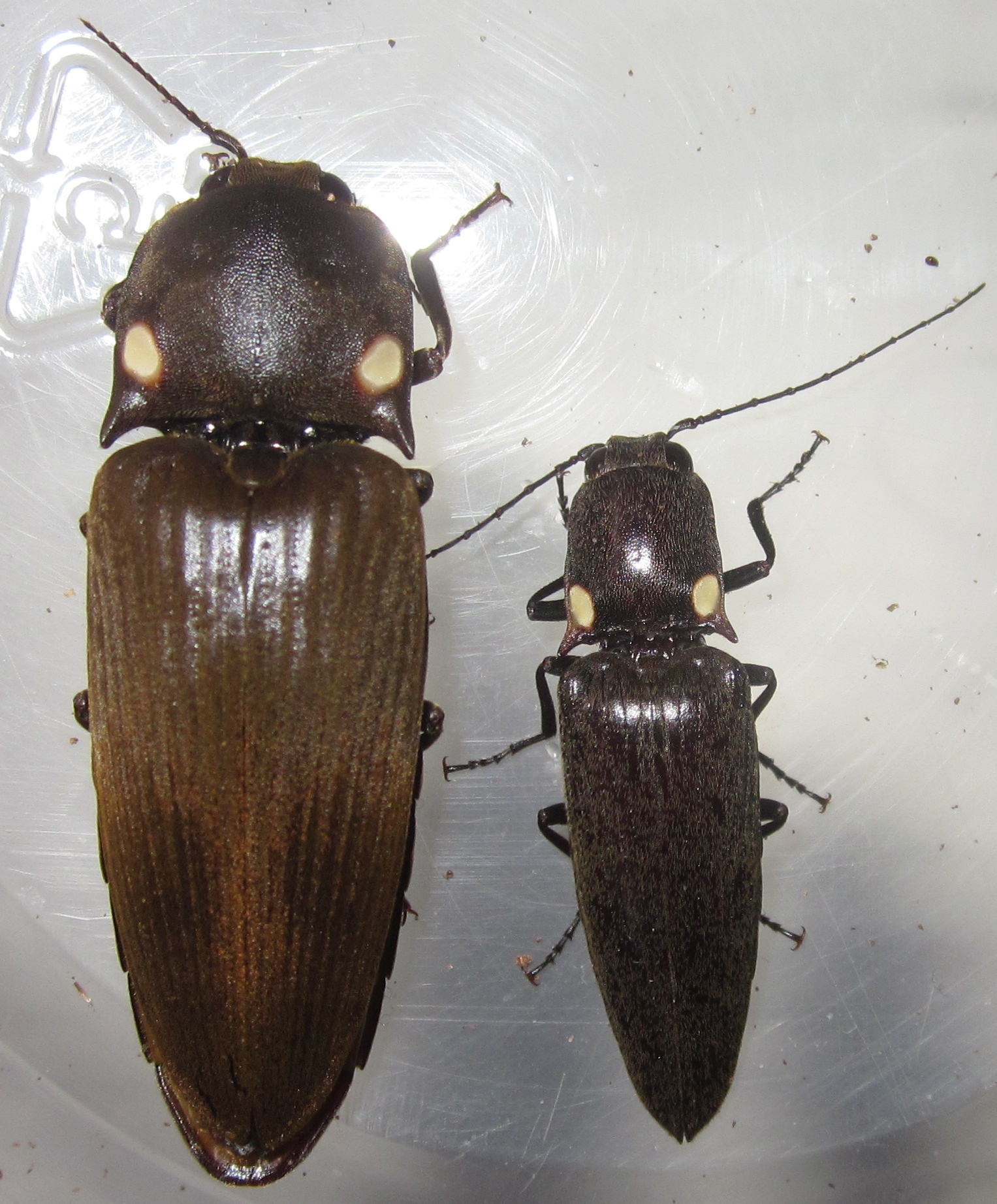
First off I'll show off my most recent additions, Ignelater havaniensis, the largest US native Pyrophorini species, large adults can get a little over an inch long. I received adults about a month ago and now have probably 100 larvae, at least!
Here's an adult male:
And now an adult female:
And here is an adult male doing his thing, glowing quite brightly from his two pronotum spots!
Here's a tiny L1 larva, click beetles go through many molts, and not even a set number of molts, not like scarabs that only have three instars:
And lastly, here is a size comparison between my largest Pyrophorus noctilucus adult (left) and my largest Ignelater havaniensis adult (right):
